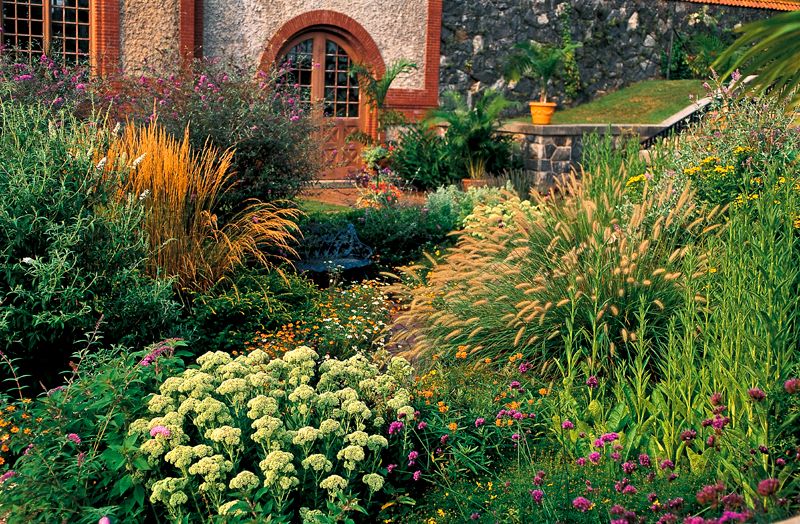What’s a garden without butterflies? Creating a butterfly garden isn’t difficult; after all, you can simply plant a butterfly bush or include a few butterfly-magnet flowers in a window box or planter. But why not create a welcoming habitat and enjoy a parade of these loveliest of Garden Travelers?
A butterfly garden that we can all aspire to is the Biltmore Butterfly Garden at the Biltmore estate in Asheville, NC. The Biltmore staff suggests: “Pick a sunny spot for your butterfly garden, preferably one protected from wind by a wall, fence, trees or other tall plants or shrubs. Ideally select a spot that will be undisturbed but will provide opportunities for viewing the butterflies.”
What else do you need? Butterflies love (and need) sun. Most of us don’t have room for an undisturbed meadow on our property, but try to pick somewhere that you won’t need to mow until the end of the butterfly season, which can last until October or November, depending on your location.
While your location dictates which plants and butterflies are native to your area, keep in mind the basic rules for attracting wildlife to your garden by providing food, water, and shelter.
Plants for a butterfly garden
Choose nectar-producing plants for adult butterflies indigenous to your region, and if you select plants that bloom at different times, there will be a steady supply of food. According to Monarch Watch, large splashes of color – especially red, pink orange, yellow, and purple– are more easily seen by butterflies.
Butterfly yummies. The three plants most commonly recommended for butterfly gardens are pentas, lantana and butterfly bush (Buddleia). Your region’s cooperative extension will have recommendations for nectar plants that do well in your area, but here are a few suggestions from the University of Georgia Cooperative Extension:
- Shrubs: Butterfly bush (Buddleia), azalea, blueberry, raspberry, hawthorne, viburnum,
- Wildflowers and Perennials: Milkweed, lantana, Queen Anne’s lace, purple coneflower, coreopsis, sunflowers, phlox, Joe-Pye weed, phlox, bee balm, and coreopsis
- Annuals: Pentas, salvia, petunia, verbena, zinnia, black-eyed Susan, aster, cosmos
Remember the nursery – food for the caterpillars
Where do butterflies come from? Larvae or caterpillars! Feed those baby butterflies! The landscaping staff at the Biltmore suggests adding a few host plants, such as parsley, dill or butterfly weed to encourage butterflies to lay their eggs. (And don’t become alarmed when the larvae begin eating the plants, that’s why you planted them.)
Water, because flying is thirsty work
Butterflies like shallow water sources, such as a mud puddle, but a saucer from your pots works. And if there’s a handy rock nearby, butterflies can rest while you admire them.
And remember, if beauty is not enough, butterflies are also natural plant pollinators. If you’re ambitious, consider having your butterfly habitat certified by the North American butterfly Association. Or, simply enjoy these beauties.
“A power of Butterfly must be –
The Aptitude to fly
Meadows of Majesty concedes
And easy Sweeps of Sky -”
― Emily Dickinson


